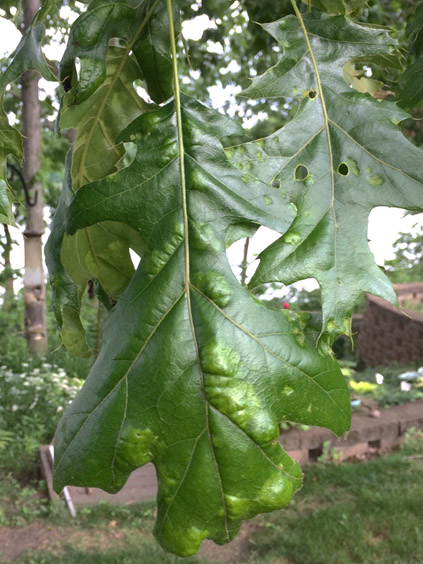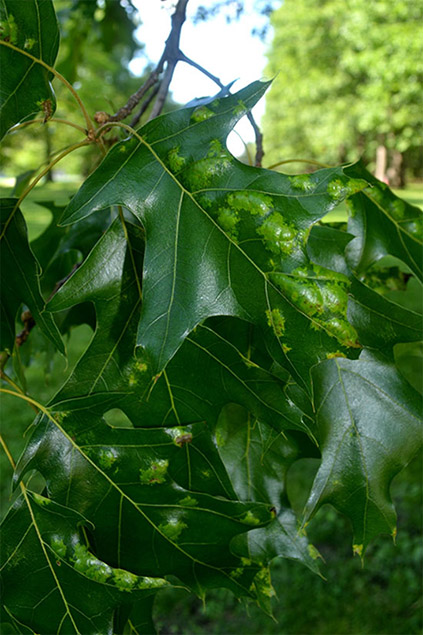Issue 6, May 31, 2016
Oak Leaf Blister
Oak leaf blister symptoms are starting to become noticeable on oak trees. This disease is caused by the fungal pathogen, Taphrina caerulescens. Although all oaks are susceptible, red and black oaks are among the most affected by this foliar disease. White oaks are rarely infected.
Symptoms begin as circular, raised spots on the upper surface of the leaf, as seen in the pictures. Symptoms continue to develop become more distinctive, and appear as scattered blister-like, puckered, or raised areas on the leaves. Symptomatic tissues are often thickened and have light green color which transitions to reddish-brown as the season progresses. Severely diseased leaves may drop prematurely.

Black Oak leaves with early symptoms of oak leaf blister caused by the fungal pathogen, Taphrina caerulescens. May 2016

Oak leaves with symptoms of oak leaf blister caused by the fungal pathogen, Taphrina caerulescens.
The pathogen survives over the winter in buds and on twigs. Infection occurs early in the spring during cool, moist weather, as the buds start to swell and open. Expanded leaves are not susceptible. Damage to trees in Illinois is mostly aesthetic and the disease is generally not considered to be a significant landscape problem. Management should focus on promoting oak tree vigor through pruning, watering, and fertilization. Though not usually warranted or recommended, several fungicides are labeled to control oak leaf blister. These products are only effective if applied as a dormant application to buds and twigs.
For more information on this disease of oaks, visit our Report on Plant Disease. (Travis Cleveland)
Author:
Travis Cleveland